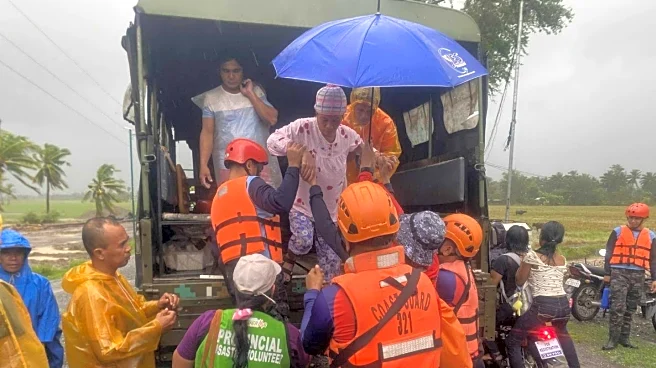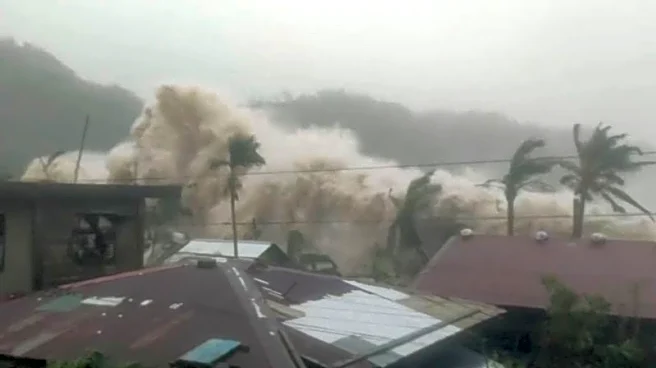What's Happening?
Typhoon Fung-wong has caused significant destruction in the Philippines, resulting in at least 18 deaths due to floods, landslides, and power outages. The storm, initially classified as a super typhoon,
weakened as it moved over the South China Sea and is now approaching Taiwan. The Philippines experienced severe weather conditions, with over 1.4 million people evacuated and substantial damage to infrastructure. The typhoon follows another deadly storm, Typhoon Kalmaegi, which recently impacted the region.
Why It's Important?
The impact of Typhoon Fung-wong highlights the vulnerability of the Philippines to extreme weather events, exacerbated by climate change. The frequent occurrence of such disasters poses ongoing challenges for disaster preparedness and response in the region. The storm's approach to Taiwan raises concerns about potential further damage and the need for effective emergency measures. These events underscore the importance of international cooperation in disaster management and climate resilience efforts.
What's Next?
As Typhoon Fung-wong moves towards Taiwan, authorities are likely to implement precautionary measures, including evacuations and infrastructure fortifications. The aftermath in the Philippines will require extensive recovery efforts, including rebuilding damaged areas and providing aid to affected communities. Long-term strategies may focus on enhancing disaster preparedness and infrastructure resilience to mitigate future impacts.
Beyond the Headlines
The recurring nature of such typhoons in the region points to broader environmental and socio-economic challenges. The need for sustainable development practices and climate adaptation strategies is critical to reducing vulnerability. These events also highlight the ethical considerations in global climate policy, emphasizing the responsibility of developed nations to support affected regions.













